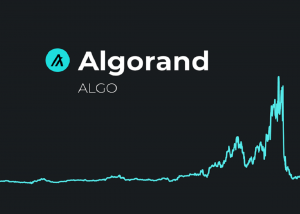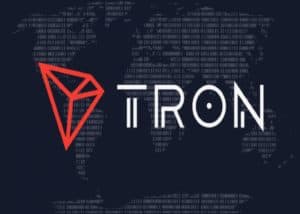Celestia Price Prediction 2024-2033
- Celestia Price Prediction 2024 – up to $28.95
- Celestia Price Prediction 2027 – up to $90.39
- Celestia Price Prediction 2030 – up to $276.25
- Celestia Price Prediction 2033 – up to $867.85
How much is TIA worth?
Today’s Celestia (TIA) current price is $12.2, with a 24-hour trading volume of $451.96 million. Its market cap is $2.96 billion, representing a market dominance of 0.18%. Over the last 24 hours, TIA’s value decreased by 1.4%.
Celestia’s peak was on January 15, 2024, at an all-time high of $20.30. Its recorded lowest price was at its all-time low of $0.00, with the date not available. The lowest price post-peak was $13.88, while the highest since then was $18.52. Current market sentiment is bullish, with the Fear & Greed Index at 60 (Greed). There is 161.65 million TIA in circulation.
TIA Price Analysis
TIA price loses buying confidence
- TIA price analysis shows a bearish pattern after facing rejection at $15
- Resistance for TIA is present at $15.38
- Support for TIA/USD is present at $11.43
The TIA price analysis confirms that TIA witnessed a bearish pressure as it faced rejection at $15. However, buyers continue to defend a decline below moving averages.
TIA price analysis 1-day chart: Bulls struggle to meet buying demand
Analyzing the daily price chart of Celestia, TIA’s price witnessed a bearish rally after bulls failed to push the altcoin above $15. Over the last 24 hours, TIA price has been on a bearish trend as bears rejected the $15 level sharply, creating a selling momentum. The 24-hour volume declined to $38.8 million, showing a decreased interest in trading activity today. TIA price is currently trading at $12.2, decreasing by over 1.4% in the last 24 hours.

The RSI-14 trend line has declined from its previous level and currently hovers around 36-level, showing that bears are slowly gaining the momentum of the price chart. The SMA-14 level suggests upward volatility in the next few hours.
TIA/USD 4-hour price chart: Bulls aim for a surge above moving averages
The 4-hour TIA price chart suggests TIA price continues to experience bearish activity within $15-$12, creating a negative sentiment on the price chart. As the price continues to decline below EMA lines, bulls are aiming to strengthen their dominance.

The BoP indicator is trading in a bullish region at 0.53, hinting that buyers are trying to build pressure near resistance levels and boost an upward correction.
However, the MACD trend line has formed red candles below the signal line and the indicator holds a negative momentum, strengthening bearish positions.
What to expect from TIA price analysis next?
The hourly price chart confirms bears are making efforts to prevent the TIA price from an immediate surge. However, if the TIA price successfully breaks above $15.38, it may surge higher and touch the resistance at $19.05.

If bulls cannot initiate a surge, TIA price may drop below the immediate support line at $11.43, resulting in a correction to $8.67.
Is TIA A Good Investment?
Celestia and modular rollups enhance Ethereum‘s performance and expansion, impacting the competition among L1 public chains. Public chains like BNB Chain and Celo opt to integrate with Ethereum as L2 Rollups due to liquidity and cost advantages. Celestia’s scalability and user-friendly design make it an appealing choice for developers, offering additional scalability to the blockchain ecosystem.
Recent TIA News/Opinions
Partnership: Starknet is teaming up with Celestia to make sure it can offer better data storage for its new Layer 3 networks. They’re going to use something called “Blobstream” from Celestia, which helps keep data safe off the main network and lets you check that it’s correct.
Celestia (TIA) Price Predictions 2024-2033
Price Predictions By Cryptopolitan
| Year | Minimum ($) | Average ($) | Maximum ($) |
| 2024 | 23.72 | 24.42 | 28.95 |
| 2025 | 34.85 | 35.83 | 41.16 |
| 2026 | 50.78 | 52.58 | 60.20 |
| 2027 | 73.03 | 75.66 | 90.39 |
| 2028 | 111.25 | 114.28 | 128.73 |
| 2029 | 158.74 | 164.46 | 191.15 |
| 2030 | 235.40 | 243.62 | 276.25 |
| 2031 | 345.28 | 357.46 | 410.51 |
| 2032 | 500.01 | 514.31 | 594.79 |
| 2033 | 758.74 | 784.45 | 867.85 |
Celestia Price Prediction 2024
The price of Celestia is predicted to reach a minimum level of $23.72 in 2024. The Celestia price can reach a maximum level of $28.95 with an average price of $24.42 throughout 2024.
Celestia Price Prediction 2025
Celestia price is forecast to reach the lowest possible level of $34.85 in 2025. According to our findings, the TIA price could reach the maximum possible level of $41.16 with an average forecast price of $35.83.
TIA Price Prediction (Celestia) for 2026
Celestia price is forecast to reach the lowest possible level of $50.78 in 2026. According to our findings, the TIA price could reach the maximum possible level of $60.20 with an average forecast price of $52.58.
Celestia Price Prediction 2027
Based on our deep technical analysis of past price data of TIA, in 2027, the price of Celestia is predicted to reach a minimum level of $73.03. The TIA price can reach a maximum level of $90.39 with an average trading price of $75.66.
Celestia Price Prediction 2028
According to the forecast price and technical analysis, in 2028, the price of Celestia is predicted to reach a minimum level of $111.25. The TIA price can reach a maximum level of $128.73 with an average trading price of $114.28.
Celestia Price Prediction 2029
The price of Celestia is predicted to reach a minimum value of $158.74 in 2029. The Celestia price could reach a maximum value of $191.15, with an average trading price of $164.46 throughout 2029.
Celestia Price Prediction 2030
The price of 1 Celestia is expected to reach a minimum of $235.40 in 2030. The TIA price can reach a maximum level of $276.25, with the average price of $243.62 throughout 2030.
Celestia Price Forecast 2031
The price of Celestia is predicted to reach a minimum value of $345.28 in 2031. The Celestia price could reach a maximum value of $410.51 with an average trading price of $357.46 throughout 2031.
Celestia (TIA) Price Prediction 2032
According to the forecast and technical analysis, in 2032, the price of Celestia is expected to reach a minimum price value of $500.01. The TIA price can reach a maximum price value of $594.79 with an average value of $514.31.
Celestia Price Prediction 2033
Based on our deep technical analysis of past price data of TIA, in 2033, the price of Celestia is forecasted to be around a minimum value of $758.74. The Celestia price can reach a maximum of $867.85 with an average trading value of $784.45.
Celestia Price Forecast By Coincodex
According to the current Celestia price prediction provided by Coincodex, the price of Celestia is expected to increase by 227.49%, reaching $40.24 by May 3, 2024. Technical indicators suggest that the market sentiment is currently bearish, while the Fear & Greed Index indicates a score of 71, signifying Greed. Over the last 30 days, Celestia has experienced 50% of the days in green, with a price volatility of 9.03%.
The forecast from Coincodex advises that it is not an opportune moment to purchase Celestia. Furthermore, considering the historical price trends of Celestia and the impact of BTC halving cycles, the lowest price prediction for Celestia in 2025 stands at $12.29. However, the price is anticipated to potentially escalate to as much as $57.95 in the following year.
Celestia Price Prediction By Digital Coin Price
Market analysts and experts, as cited by Digital Coin Price, forecast that TIA will commence the year 2026 at $36.31 and is expected to trade around $43.67. This projected value represents an exceptionally high increase compared to the previous year, marking a significant and favorable jump in Celestia’s price trajectory.
By 2033, predictions indicate that Celestia aims to achieve a minimum price of $312.71. Efforts will be made to attain a maximum price level of $324.80, with an average projected price of $319.76. This potential price movement suggests that Celestia could surpass its previous highs and advance to new levels. While the outlook remains positive with the expectation of reaching new levels, there is also a cautionary note that the asset could experience a downturn.
Celestia Price Prediction By Changelly
After analyzing the price trends of Celestia in previous years, it is projected by Changelly that in 2025, the minimum price of Celestia will be approximately $23.76. The maximum price is expected to reach around $27.25. On average, Changelly predicts that the trading price of Celestia will be about $24.57 in 2025.
Overview Of Celestia
On October 31, 2023, Celestia, a pioneering blockchain network specializing in data availability, successfully launched its mainnet. Accompanying this launch was the release of TIA, the network’s native cryptocurrency, with a value exceeding $300 million.
Since its debut in October 2023, Celestia has rapidly gained traction among cryptocurrency investors, evidenced by a staggering increase of over 500% in the value of TIA.
The growth trajectory of the project continued to ascend in December 2023, as Celestia expanded its horizons by integrating with the chain development kit of Polygon. This strategic move brought Celestia’s data availability solutions to a vast array of chains and developers within the Polygon (MATIC) ecosystem.
In this article, we dive into Celestia, exploring its groundbreaking impact on the cryptocurrency sector, the functionalities of TIA tokens, and more, providing comprehensive insights into all things Celestia.
TIA Price History
Let’s delve into Celestia’s TIA token’s brief but informative price history. While historical performance is not a reliable indicator of future results, understanding the token’s past fluctuations can offer valuable insights for those interested in making or interpreting predictions about Celestia’s price.
TIA made its debut in the open market on October 31, 2023, priced at $2.10. For the initial 10 days approximately, its value remained close to this initial mark. However, on November 10, TIA entered a bullish phase, climbing to $7.38 by November 18. Following this peak, the token’s price experienced a decline, influenced by the broader crypto market’s reaction to news of a substantial fine imposed by American officials on the Binance crypto exchange. By November 27, the value of TIA had fallen to $5.30.
In December, the token’s value surged again, reaching a record high of $15.14 on December 24, before settling at $11.86 at the end of the year. TIA price started in 2024 on a bullish note, surging above the $20 mark in mid-January.
Significance Of Celestia’s Collaboration With Polygon Labs
Polygon and Celestia stand as pivotal contributors to Ethereum’s vision for a rollup-centric ecosystem. Polygon specializes in furnishing a comprehensive toolkit that empowers developers to effortlessly craft new blockchains and decentralized applications. Conversely, Celestia enhances the scalability of layer two rollups by offering services like off-chain data storage, consensus, and verification.
On December 12, 2023, Polygon Labs revealed a significant development: Celestia’s data availability (DA) solution will now be accessible to developers within the Polygon ecosystem. This integration means that Celestia’s DA service can be seamlessly incorporated as a modular component within the Polygon Chain Development Kit (CDK), enabling developers to effectively implement and tailor Celestia’s DA functionalities.
The Polygon Chain Development Kit (CDK) is already a cornerstone for several blockchain ventures such as OKX, Astar, Canto, Gnosis Pay, Plam, and IDEX, facilitating the establishment of layer two chains atop Ethereum.
Sandeep Nailwal, the co-founder of Polygon, encapsulated the potential impact of this integration, stating, “The ability to launch a high-throughput ZK-powered Ethereum Layer 2 as easily as deploying a smart contract will do for blockchain adoption what high-speed fiber did for Web2 applications.”
More on the Celestia Network
Celestia stands out as a modular blockchain network, offering a foundational platform for developers to create and sustain their own blockchains. Its key feature is the provision of data availability and consensus services for other blockchains.
Celestia enables various blockchains to reliably store transaction data on its network when utilized as a data availability layer. This approach helps in keeping the nodes of these blockchains lightweight and efficient, even as the blockchain expands. Additionally, as a consensus layer, Celestia employs a network of nodes to verify and authenticate the data stored within its system.
On October 31, 2023, Celestia’s mainnet launch marked a significant milestone, initiating what many consider the “modular era” in blockchain technology. To understand the importance of this development, it’s essential to grasp the concept of blockchain modularity and its impact on the cryptocurrency ecosystem.
Blockchain modularity refers to a design approach where the various core functions of a blockchain are separated. Traditional or early-generation blockchains like Bitcoin (BTC) and Ethereum (ETH) are monolithic, meaning they handle all essential operations – data availability, consensus, execution, and settlement – within a single, integrated system.
In contrast, modular blockchains adopt a more specialized approach, focusing on optimizing specific functions. Blockchain modularity aims to provide an infrastructure that can scale more efficiently, accommodating a larger volume of transactions and activities. This modular architecture also aims to streamline the process for developers, making it quicker and simpler to launch new blockchains and decentralized applications (dApps).
An illustrative example of how a modular blockchain system operates would be a layer-two (L2) rollup. In this setup, the rollup executes transactions on its chain, utilizes Celestia for making transaction data accessible, and relies on Ethereum for the final settlement of transactions.
Founder
Mustafa Al-Bassam, a PhD student in computer science at University College London (UCL), is the founder and CEO of Celestia. This company has garnered attention in cryptocurrency, partly due to Al-Bassam’s past. Previously known as “tFlow,” a moniker he used during his teenage years, Al-Bassam was a key member of the notorious hacking group LulzSec. This group executed several high-profile cyberattacks against entities like the CIA and Sony. Al-Bassam’s arrest in 2011 marked a turning point in his life.
Since moving on from his hacking activities, Al-Bassam has been transparent about his past. He often discusses his experiences, highlighting a particular incident where he hacked the Westboro Baptist Church during a live radio show as his most notable exploit.
How Does Celestia Work?
Celestia is distinguished as the first data availability network in the world. To appreciate its significance, it’s crucial to understand what data availability is and the specific challenge that Celestia addresses.
Data availability refers to the assurance that any participant in a network can access transaction data at any given time for block verification. This is a crucial security feature, enabling participants to scrutinize the blockchain ledger and confirm the authenticity of its transactions.
A critical issue in this context is the requirement for nodes to download entire transaction data to independently verify blocks. As a blockchain grows, this becomes a significant scaling challenge, especially for normal nodes, which, unlike full nodes, cannot download the complete blockchain data.
Celestia addresses this challenge through data availability sampling (DAS) technology. DAS enables nodes, particularly light nodes that don’t download the entire blockchain, to verify a block by sampling just a small portion of its data.
Light nodes execute multiple rounds of random sampling to validate the availability of block data. With each round, the assurance that the data is available increases. When a certain confidence level, such as 99%, is attained, the light node deems the block data as available.
As employed by Celestia, this DAS technology is anticipated to significantly aid blockchains like Ethereum in scaling efficiently without compromising security. For instance, Layer 2 (L2) rollups are vital for Ethereum’s scalability, post condensed versions or proofs of transactions to the primary Layer 1 (L1) for settlement. If transaction data are not readily verifiable (i.e., data availability issues), there’s a risk of dishonest actions by rollup operators. Celestia’s solution helps mitigate this risk by ensuring data availability.
From The Whitepaper
In Celestia’s whitepaper, the company explains the efficiency-enhancing features of its LazyLedger ledger. The key idea is that the primary role of a consensus system in a distributed ledger is to sequence transactions and guarantee their availability. This approach implies that participants in the consensus process don’t need to delve into the specifics of the transaction content.
This focus shift simplifies block verification to merely confirm data availability. Such verification can be probabilistically accomplished with sub-linear complexity, eliminating the need to download the entire block. As a result, the resource demands of achieving consensus are significantly reduced. This is because transaction validity rules can be separated from those governing consensus. This design choice aims to streamline the consensus process, making it faster and more resource-efficient.
All About Celestia’s TIA Token
Along with the launch of its mainnet on October 31, 2023, Celestia introduced TIA, its native cryptocurrency.
For its initial distribution, the project set aside 60 million TIA tokens, representing 6% of the total supply, to be distributed through an airdrop at the time of Genesis. This airdrop targeted a specific group of recipients, including developers, researchers, highly active stakers, and holders of addresses on Ethereum, Ethereum rollups, Cosmos, and Osmosis.
The TIA token facilitates transactions within the Celestia network, granting its holders the privilege to vote on network updates and changes. Additionally, TIA tokens can be traded, bought, and sold on various exchanges.
Currently, Celestia operates on the Cosmos blockchain framework, which categorizes TIA as a token instead of a coin. Consequently, any references to “Celestia coin price prediction” are technically incorrect, as TIA should be referred to as a token in this context.
Tokenomics Of TIA
- Total Supply Cap: TIA tokens are capped at a maximum of 1 billion tokens.
- Initial Inflation Rate: In the first year, TIA tokens are set to have an inflation rate of 8%.
- Decreasing Inflation Rate: Each year, the inflation rate of TIA tokens is designed to decrease by 10%.
- Inflation Rate Floor: This decreasing trend will continue until it reaches a floor, or minimum level, of 1.5% annual inflation.
Uses Of TIA
- Fees for Data Availability: Developers are required to pay fees in TIA to access Celestia’s data availability solutions.
- Rollup Usage: Celestia-based rollups will utilize TIA as both a gas token and a form of currency.
- Proof-of-Stake Mechanism: Celestia, operating as a proof-of-stake blockchain, employs TIA for staking purposes.
- Governance Participation: Holders of TIA tokens who engage in staking will also have the opportunity to participate in Celestia’s decentralized governance process.
Benefits Of Using Celestia
Celestia’s modular design and its use of light nodes with Data Availability Sampling (DAS) offer a range of advantages for both developers and users:
- Enhanced Scalability: In traditional monolithic blockchains, all decentralized applications (dApps) and contracts operate within the same execution environment, competing for the limited computational resources of the network. This structure hampers scalability. Celestia, however, allows each dApp to have its dedicated execution environment, which can be scaled according to the dApp’s growth, leading to quicker and more consistent transaction times and settlements.
- Robust Security: dApps and rollups built on Celestia benefit from the security provided by the Celestia proof-of-stake consensus protocol.
- Flexibility with Unlimited VMs: In monolithic blockchains, smart contracts are executed in a specific Virtual Machine (VM), like the Ethereum Virtual Machine (EVM), restricting the choice of programming languages. Celestia, in contrast, enables developers to select their execution environment and VM, allowing for a broader range of functionalities and programming languages.
- Faster Transaction Processing: By separating the execution environment from the base blockchain layer, Celestia allows for the creation of dApps that can process transactions much faster and more efficiently than those on other blockchains.
- Independence and Customizability: The abstraction of the execution environment on Celestia provides developers and communities the freedom to choose and modify their VM and programming language. This independence means changes can be made to a dApp or rollup without impacting others built on Celestia.
- Increased Decentralization: The use of DAS enables users to operate light nodes on their own devices, verifying the blockchain independently. This contributes to a significant increase in the number of network nodes, enhancing the overall decentralization of the network.
Is Celestia A Good Investment?
Boasting a proficient team that has already delivered a high-quality product, Celestia appears to be on a trajectory toward a promising future, especially once it unveils a detailed roadmap. Engaging with Celestia in its nascent market phase carries inherent risks. Yet, it also presents significant potential for growth, as is often the case with new tokens in the cryptocurrency landscape.
The upcoming Bitcoin Halving event and the anticipated expansion of Celestia’s ecosystem render it an increasingly attractive option as the crypto market begins to recover from its downturn. Looking towards the future, the evolving trend towards modular blockchains suggests that Celestia could emerge as a frontrunner in this domain, leveraging its early presence and strategic positioning in the market.
Best Place To Buy TIA
Celestia’s TIA token is available on major exchanges, including Binance. You have two primary options for purchasing TIA: through Binance’s spot market with fees as low as 0.1%, or instantly with a card at slightly higher fees.
Binance offers up to 5x leverage on TIA for those interested in trading. Alternatively, for a lower-risk approach, Binance Earn allows locking in your TIA tokens for up to 120 days, potentially yielding up to 19.9% APR, though with some quota restrictions.
Additionally, Binance’s auto-invest feature enables a dollar-cost averaging strategy, where you set a specific amount and frequency for automated TIA purchases. This can be a strategic way to grow your TIA holdings through Binance’s platform.
Conclusion
A lot of people are getting interested in Celestia and the idea of building blockchains in pieces, which could really change how the blockchain world works and might make TIA more valuable. Celestia is also set to bring in a lot of developers who know different coding languages, which could change how people see blockchain and the technology behind it.
However, it’s not clear yet how Celestia will do since they haven’t shared their plans in detail, and they’re entering a space that’s already full of competitors. It’s uncertain if Celestia will become one of the top cryptocurrencies to invest in, as only time will tell. You should look into it yourself and get solid investment advice before putting your money into such a changing market.





